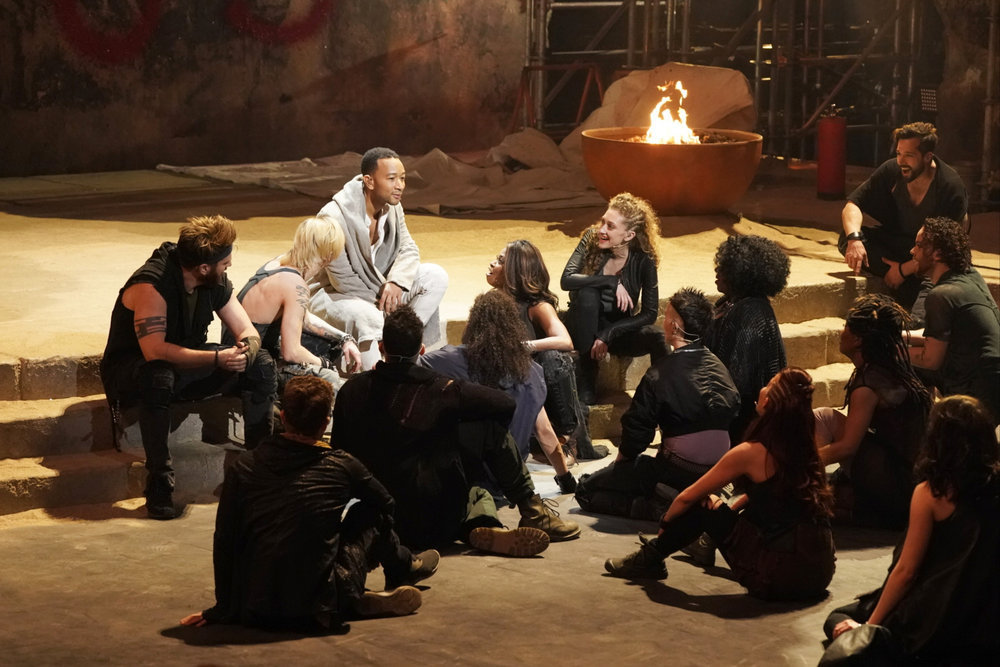Dance enthusiasts and community members alike celebrated the Martha Graham Dance Company’s diverse program of company classics and new works at the Fine Arts Center last Tuesday.
As stated in the show’s program, the Martha Graham Dance Company, founded in 1926 by American dance revolutionary Martha Graham, has made it its mission to “foster Graham’s spirit of ingenuity. The company is actively working to create multiple points of access for audiences.”
This mission was realized in a showcase of four different pieces.
The evening started out with the Graham classic, “Diversion of Angels,” introduced by Janet Eilber, the Martha Graham Dance Company’s Artistic Director. This piece, she explained, was Graham’s portrayal of the three stages of love, represented by three girls in colored dresses.
These themes were present in the movement as the girl in yellow, representing flirtatious, adolescent love, jumped around with a happy and energetic air about her, while the lady in white, mature love, remained poised and stable in her long and unmoving balances.
Finally, the woman in red, romantic love, streaked across the stage with long, expansive slides and leaps that had a feisty vibe, well suited to her passionate character.
Despite their strong technique, the appearance of the non-featured dancers, however, distracted from the theme of the piece and limited the space available to the three lead dancers.
The second piece of the night, “Lamentation Variations,” was a reinvention by three contemporary choreographers of one of Graham’s most famous solos about grieving, known as “Lamentation.” It premiered in New York on Sept. 11, 2007, as a tribute to the lives lost in the terrorist attacks six years earlier.
The first section, choreographed by Larry Keigwin, included four dancers clad in nude leotards and shorts, original video footage of Graham’s solo and haunting audio of the dance pioneer talking about her piece. The stage and the mood of the section were dark, but that darkness made the connection and interaction between the four bodies on stage more powerful, with the male dancers expertly controlling their bodies and those of the lone female partner in incredible lifts.
The second section of “Lamentation Variations,” choreographed by Richard Move, was, like the original piece done by Graham, a solo done by one woman in dark clothing. However, in this piece, the dancer was confined to one strip of light on stage that stretched from one side to the other. Despite the confines of her space, her dancing was powerful and controlled, with an energy that went beyond her movement.
The final section of this piece, created by Bulareyaung Pagarlava, featured the entire company. This section featured frequent synchronized moments when one or two dancers would break from the group, creating a stunning visual effect. The most powerful moment of this section was when all the dancers slowly melted to the floor one by one, leaving just one couple wrapped in an embrace. That particular moment captured all of the grief and anguish of the original “Lamentation,” 9/11 and today.
After intermission, the show returned with another piece that has been in the company’s repertory since 1947: “Errand Into the Maze.” This piece, as Eilber explained, is loosely based on the Greek myth of Theseus, but with a woman entering the maze to conquer a minotaur of her own: a man.
The strong partnering in this piece, however, was at the expense of the woman being portrayed as weaker than the man, up until the end when he is miraculously vanquished. The rope used in the piece to represent the maze could have been utilized more effectively by the woman as a weapon against her foe rather than simply having her stand in frozen terror at crucial moments. However, other props, such as a stick the man carried that gave the illusion of a Minotaur stature, were used to better purpose.
The final piece of the evening was a 2014 work also based on Greek mythology called “Echo.” This work, choreographed by Andonis Foniadakis, was inspired by Narcissus, a man in love with his own reflection, and Echo, the sprite who loves him but can only repeat the words of others. Love and echoes of movement were present in the circular light pattern and flowing choreography that made the dancers look like they were floating in the pond where Narcissus saw his reflection. Sadly, the supporting dancers in the piece again seemed superfluous, there to repeat rather than enhance the themes of the piece.
Regardless of who was on stage at any given time, it was clear the dancers were extremely versatile. From the sharp lines and contractions of the original Graham choreography to the flowing, ethereal quality of the new works, the audience noted and appreciated the range and skills of the dancers.
Erica Weiss can be reached at [email protected]


















